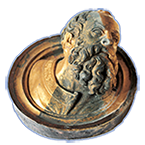Speaker
Description
The ANTARES neutron imaging facility at Heinz Maier-Leibnitz Zentrum (MLZ) of TUM provides several imaging methods for cultural heritage research. Neutrons help when X-rays cannot penetrate samples, or deliver little to no contrast on the materials involved. Neutrons often provide complementary contrast to x-rays which makes them ideally suited to investigate samples like bones in chalk rock, enamel and dentine in fossil teeth, but also moisture or wood impregnating chemical agents.
Standard neutron radiography provides insight into metallic objects containing organic substances. 3D computed tomography provides three-dimensional information about the internal structure of samples, like fossils embedded in rock.
Bragg edge radiography and tomography is based energy-selective scanning of samples which allows to detect different metallic phases e.g. in medieval swords, providing information on the forging technique.
Neutron grating interferometry (nGI) allows to detect structures (e.g different materials, porosity, inclusions, etc.) below the real space resolution limit of an imaging instrument by analyzing the ultra-small-angle scattering originating from these structures. Hence, this technique allows to indirectly localize structures in the size range from 15 μm to 0.5 μm. By analyzing these data information about the manufacturing process of e.g. pottery can be gained.
The talk will illustrate all methods employed at ANTARES with specific examples.

